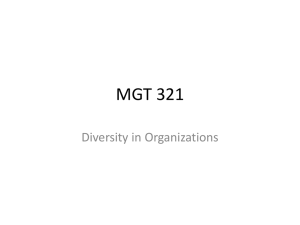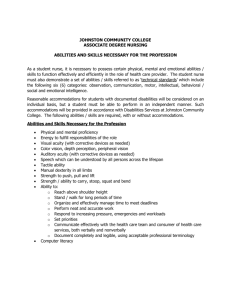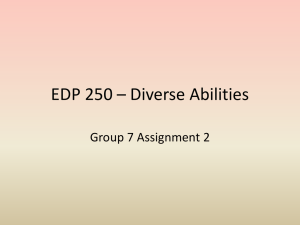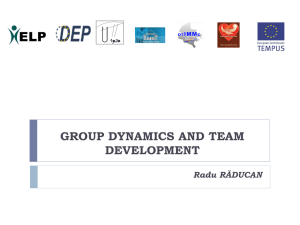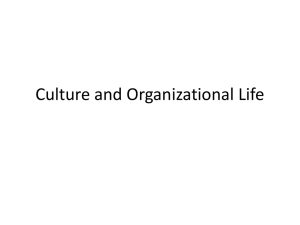Cattell-Horn-Carroll model of psychometric abilities - Rosehill
advertisement
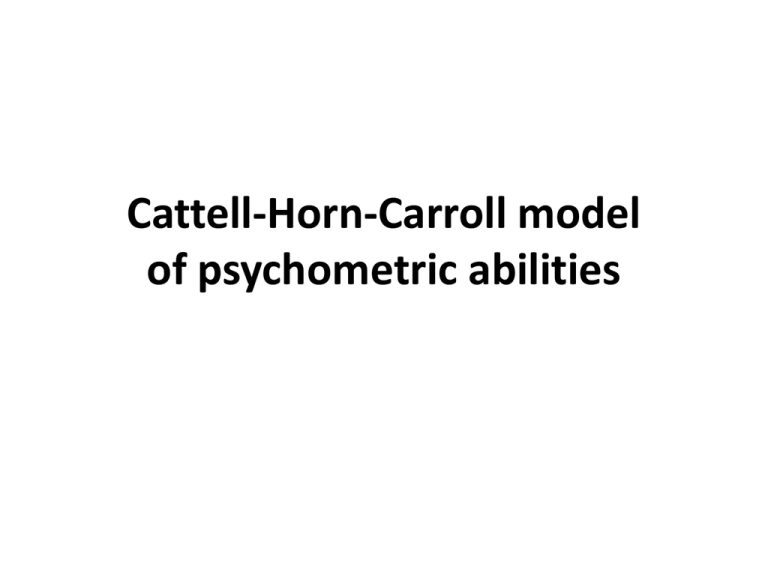
Cattell-Horn-Carroll model of psychometric abilities What is psychometrics? • Psychometrics is a specialist area of psychology that focuses on the measurement (metric) of psychological abilities (psycho). Describing intelligence • Cattell, Horn and Carroll referred to each other’s theories and research evidence in developing their own theories of intelligence. All described intelligence as consisting of different cognitive abilities. Are all cognitive abilities even? • They also believed that intelligence was best represented as a hierarchy, with different cognitive abilities arranged in separate strata, or levels. How are these cognitive abilities organised? • Cognitive abilities in the upper part of the hierarchy are described as ‘broad’. • These broad abilities are made up of ‘narrower’, or more specific, cognitive abilities in the lower part in the hierarchy. Cattell-Horn-Carroll’s three stratum Level of Strata • Higher level strata are broad and encompas more • Lower level strata are narrow and more specific Fluid Intelligence (Gf) • Fluid intelligence (Gf) involves the use of reasoning for problem solving, particularly to solve new or unusual problems. • It includes abilities such as identifying relationships between different concepts and drawing logical conclusions. • Fluid intelligence depends minimally on skills and knowledge gained through formal education or cultural experience. • It is described as biologically based and a kind of ‘natural’ cognitive ability that we all have in differing amounts. • Fluid intelligence is assessed using tasks that are not dependent on language or specific knowledge; for example, tasks requiring you to identify a missing piece in a pattern or to organize different shapes or patterns into a logical sequence. Crystallised intelligence (Gc) • Crystallised intelligence (Gc) involves the use of knowledge and skills we acquire through experience in everyday life. • This includes all the knowledge and skills we learn through formal and informal education in our socio-cultural environment. • Crystallised intelligence also involves the ability to reason, but reasoning using previously learned knowledge and problem solving procedures. • It is commonly assessed through tests of vocabulary and general knowledge. For example, tasks requiring you to define the meaning of a word or to name the Prime Minister of Australia involve fluid intelligence General Memory and Learning (Gkn) • Aquired knowledge in a specific area such as a certain skill (lipreading) or a certain knowledge (geology) Broad Visual Perception (Gv) • ability to think using visual images • ability to perceive, analyse and generate visual shapes and patterns • ability to store and recall visual information and representations Broad Auditory Process (Ga) • ability to think using auditory information • ability to identify, analyse, comprehend, combine and work out the difference (discriminate) between sounds • ability to store and recall sound patterns (e.g. pitch, tones, rhythms, voices) Broad Retrieval Ability (Gr) • Store consolidate and retrieve information from long term and possibly short term memory Broad Cognitive Processing Speed (Gs) • ability to rapidly and accurately perform easy, well-learned cognitive tasks that require little thinking, particularly when measured under pressure to maintain speed • use of attention and focused concentration Processing speed (Gt) • ability to react and/or make correct decisions quickly in response to simple stimuli
